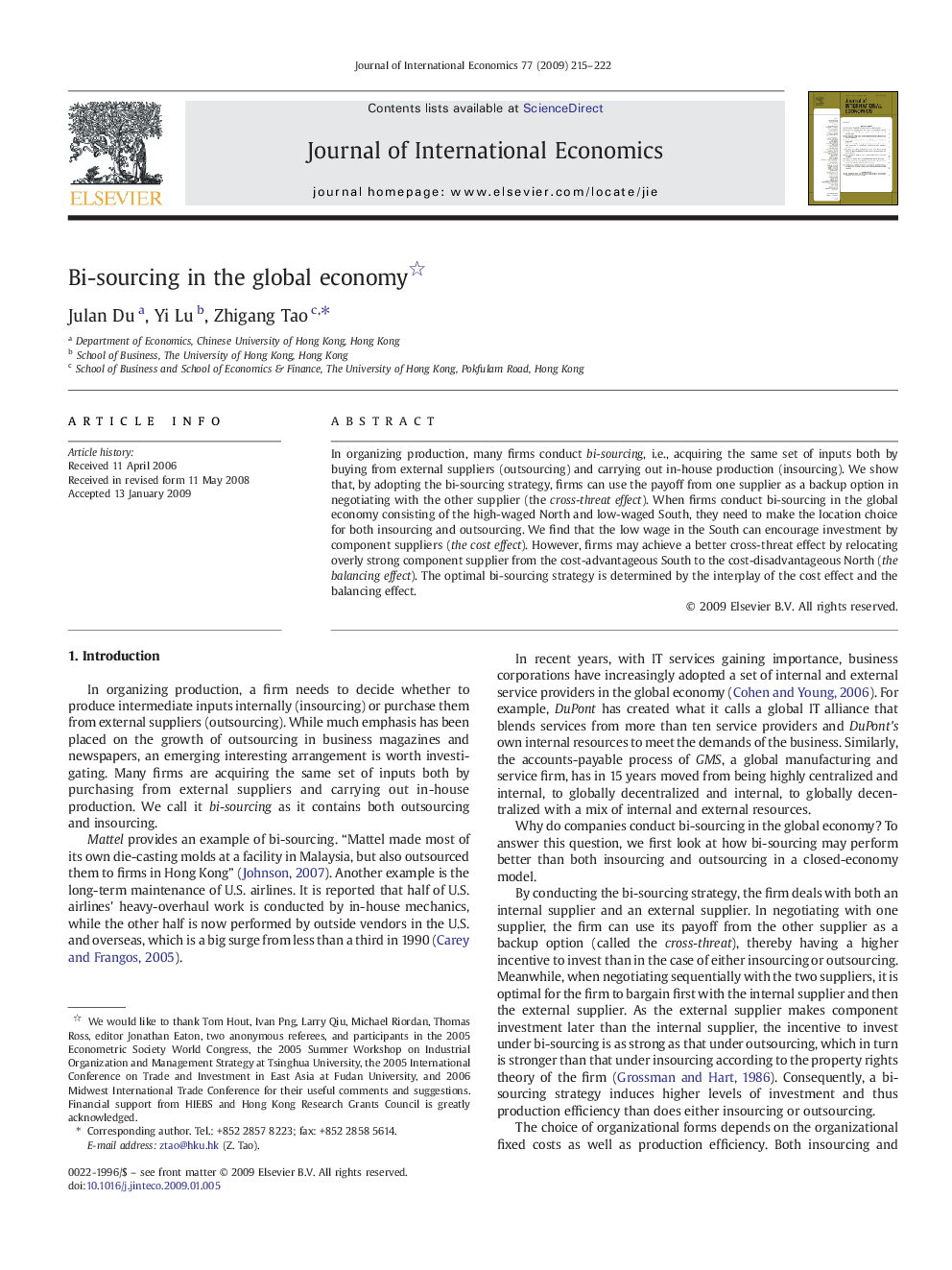| Article ID | Journal | Published Year | Pages | File Type |
|---|---|---|---|---|
| 962456 | Journal of International Economics | 2009 | 8 Pages |
Abstract
In organizing production, many firms conduct bi-sourcing, i.e., acquiring the same set of inputs both by buying from external suppliers (outsourcing) and carrying out in-house production (insourcing). We show that, by adopting the bi-sourcing strategy, firms can use the payoff from one supplier as a backup option in negotiating with the other supplier (the cross-threat effect). When firms conduct bi-sourcing in the global economy consisting of the high-waged North and low-waged South, they need to make the location choice for both insourcing and outsourcing. We find that the low wage in the South can encourage investment by component suppliers (the cost effect). However, firms may achieve a better cross-threat effect by relocating overly strong component supplier from the cost-advantageous South to the cost-disadvantageous North (the balancing effect). The optimal bi-sourcing strategy is determined by the interplay of the cost effect and the balancing effect.
Related Topics
Social Sciences and Humanities
Economics, Econometrics and Finance
Economics and Econometrics
Authors
Julan Du, Yi Lu, Zhigang Tao,
